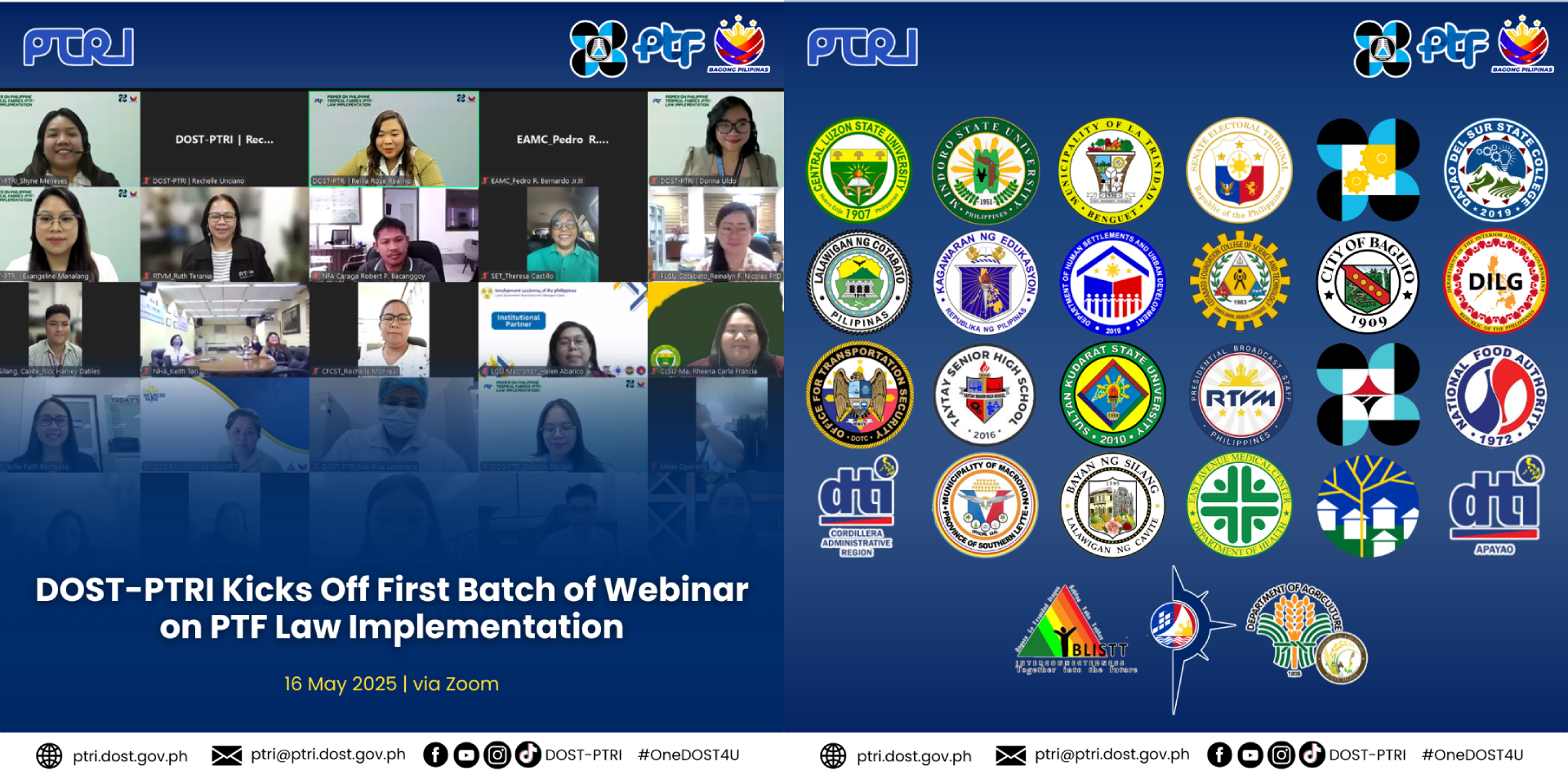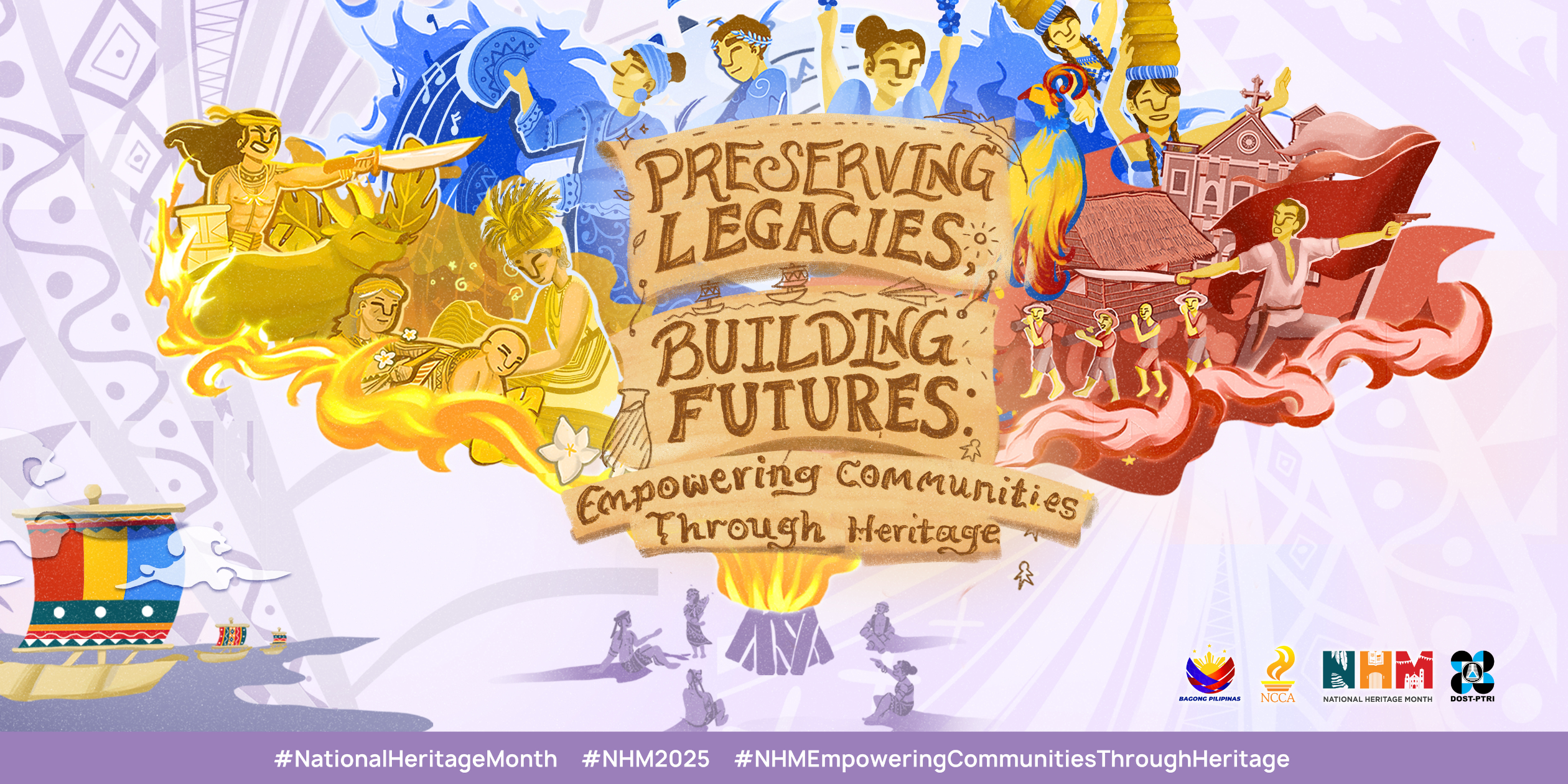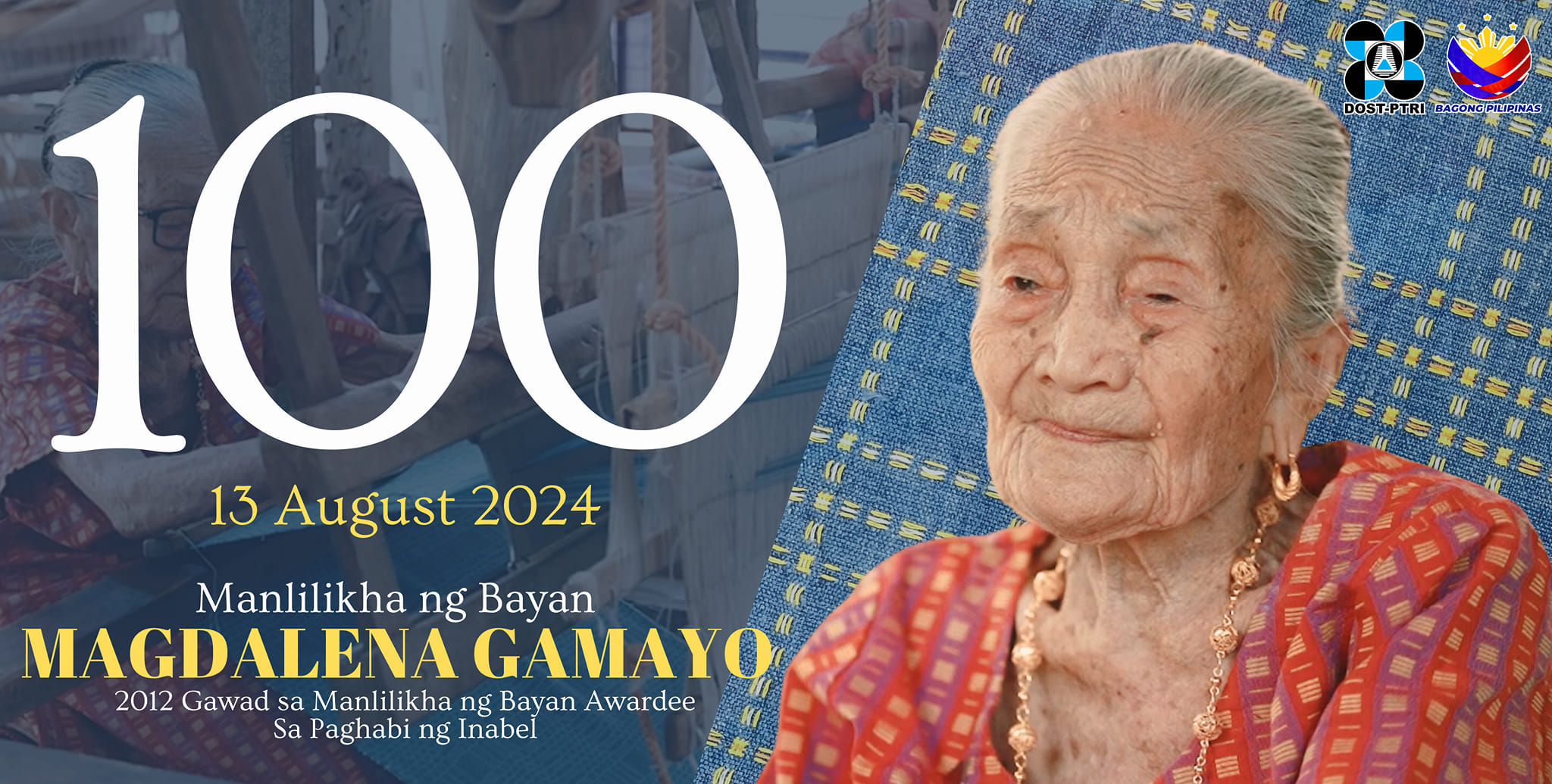- Details
- Hits: 12
Textile 101 on Beyond Fabric: What is Fabric?
Fabric, one of humanity’s oldest and most essential materials, is a versatile planar structure made from yarns or directly from fibers. While weaving and knitting remain the most common methods of production, other techniques—such as braiding, felting, and bonding—continue to shape the diversity of global textiles..
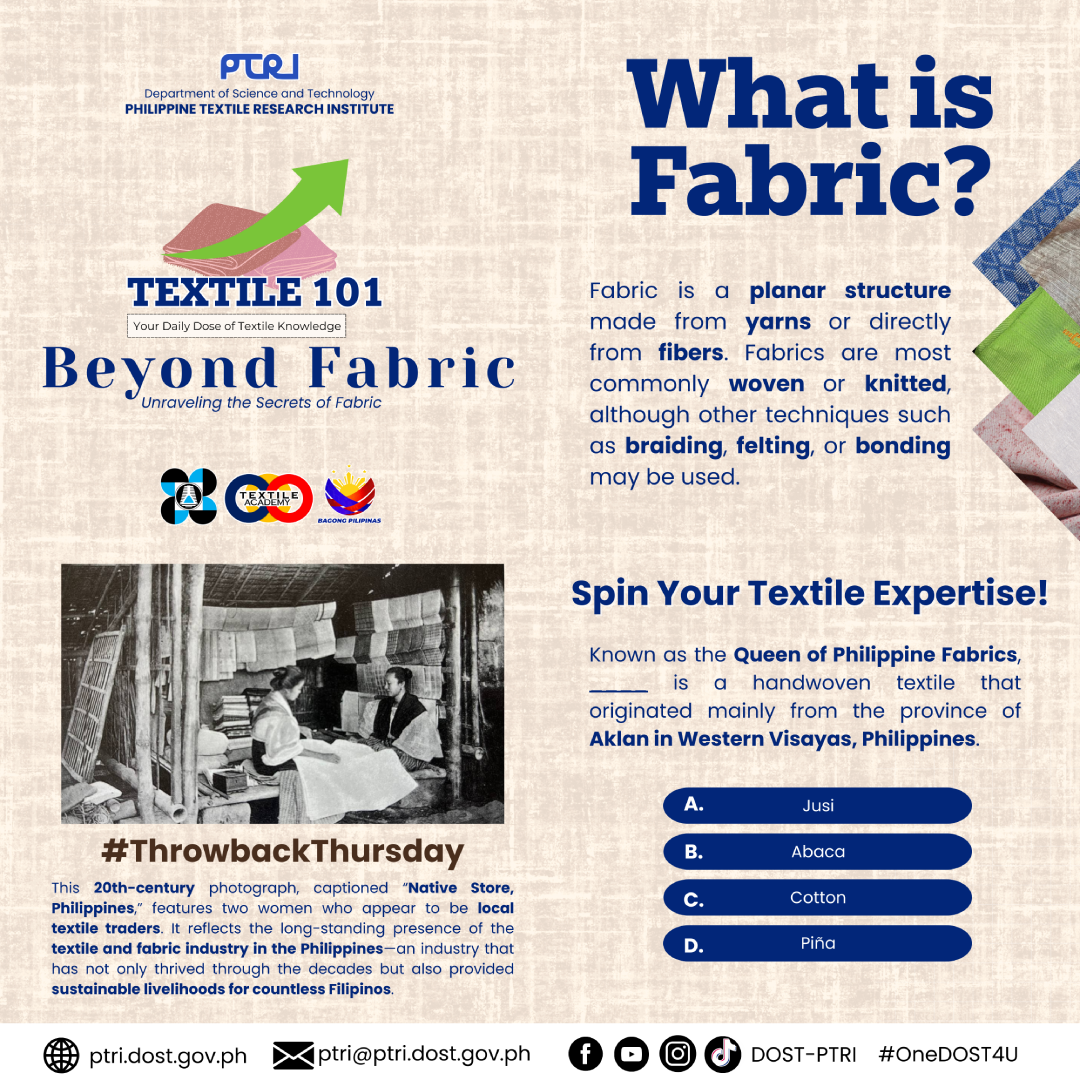
- Details
- Hits: 51
Textile 101 on Weave Got Facts: What is Weaving?
Weaving has traditionally been done using a loom, where lengthwise threads known as the warp are stretched. Crosswise threads, called the weft or filler, are then interwoven under and over the warp. The way these threads interlock creates the weave.
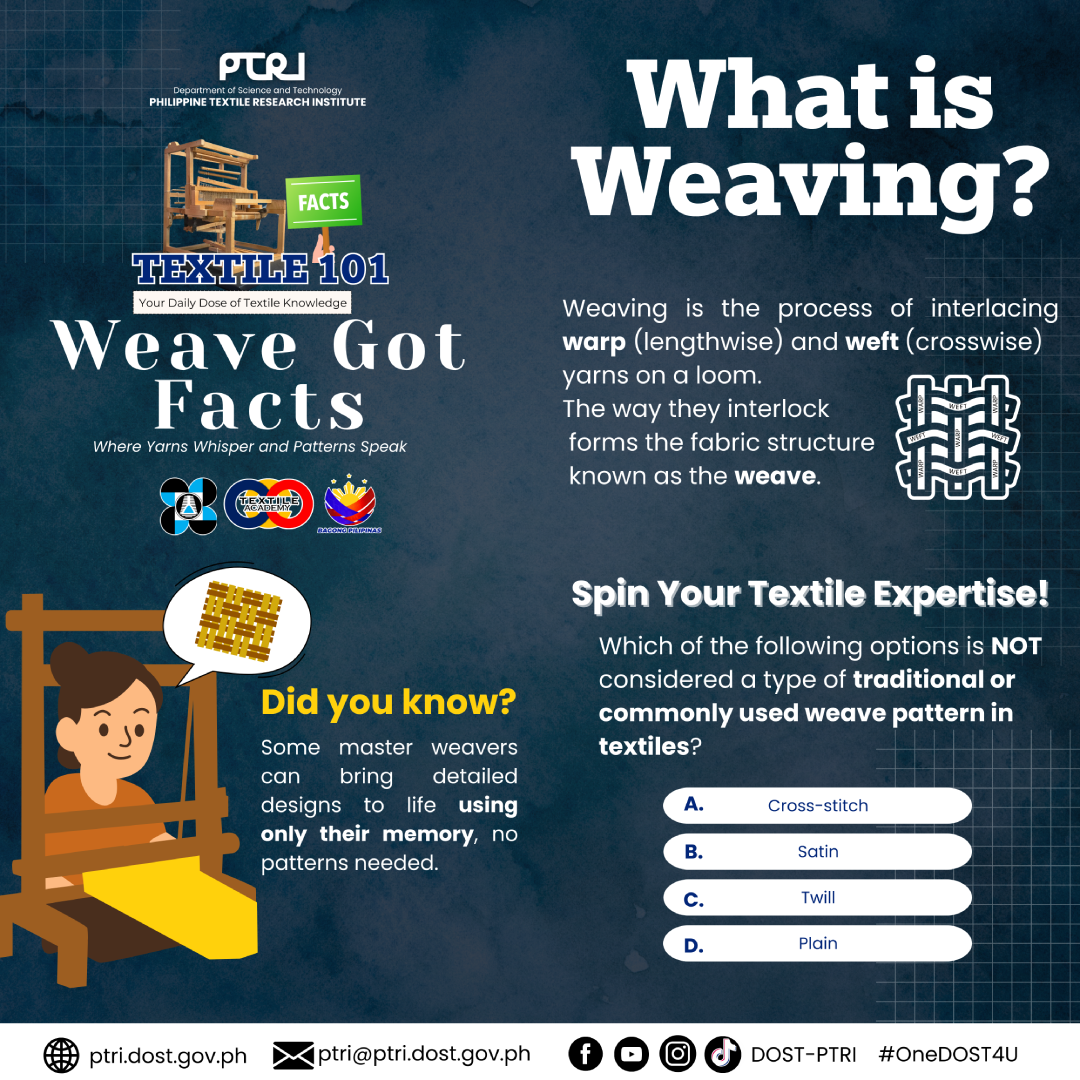
- Details
- Hits: 56
Textile 101 on Alam mo ba YARN?: What is Yarn?
Yarn is the fundamental element in woven, knitted, braided, netted, and lace fabrics, with its properties shaped by the characteristics of the fibers and how they are assembled. The type of yarn used plays a key role in determining how a fabric performs during wear, washing, or dry cleaning, making it essential for both the functionality and durability of the final textile.
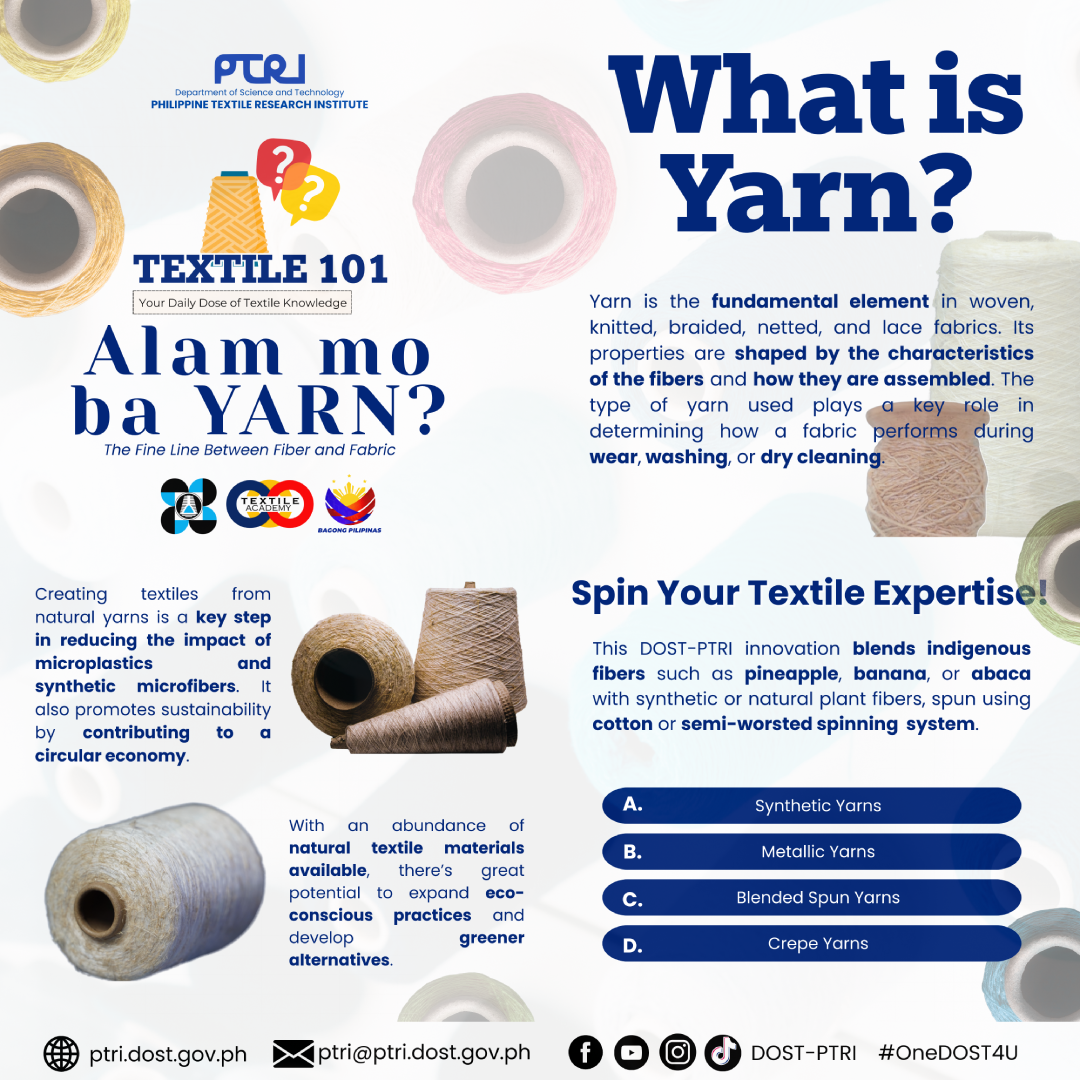
- Details
- Hits: 61
Textile 101 on Fiber Focus: What is Fiber?
Fibers are the basic building blocks of textiles—thin strands that can be spun into yarn and transformed into fabrics used in everything from clothing and upholstery to industrial materials. Until the twentieth century, fabric selection and care were relatively simple, as textiles were made exclusively from natural fibers. Whether natural, like cotton and pineapple, or synthetic, such as polyester and nylon, fibers possess unique properties shaped by their physical structure, chemical composition, and morphology.
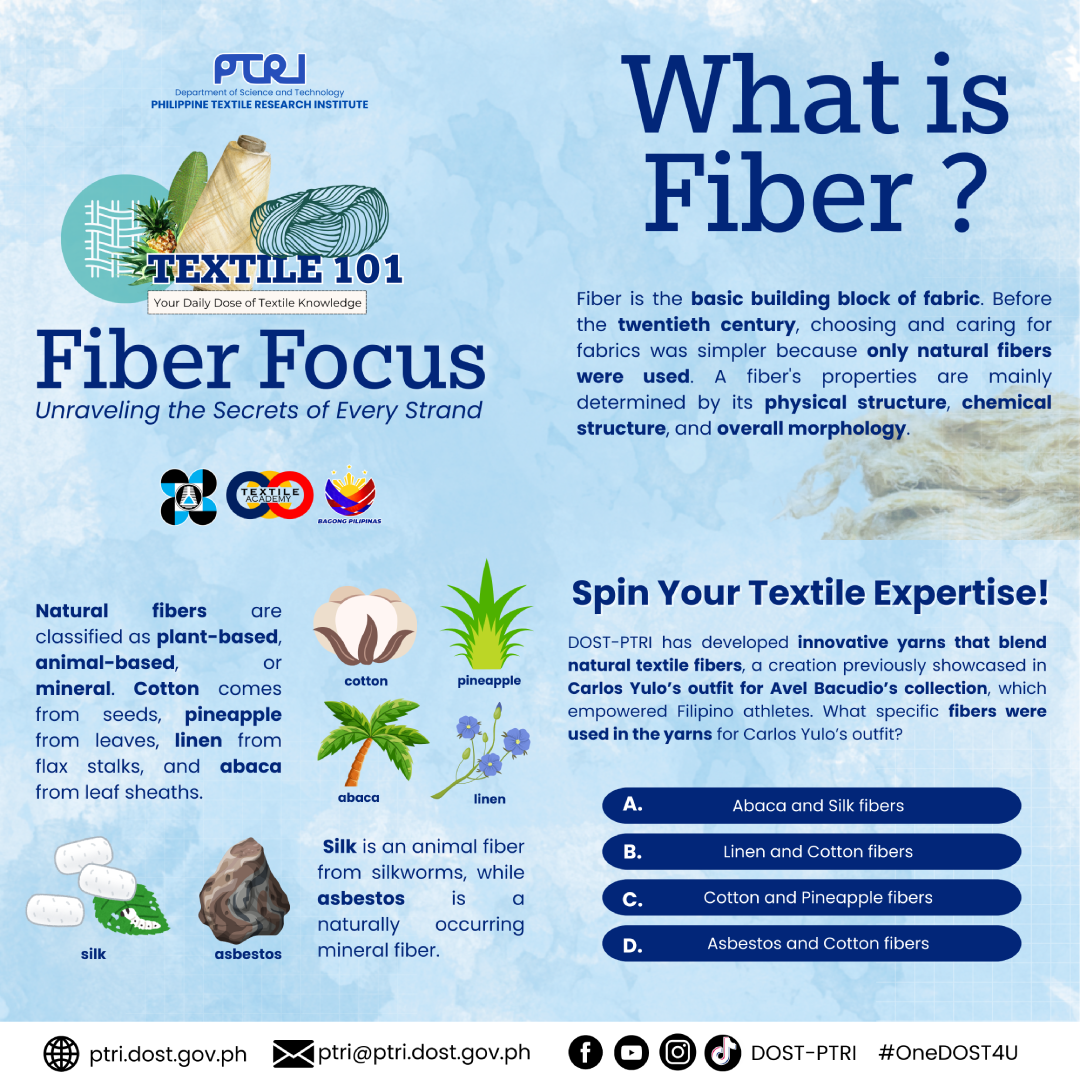
- Details
- Hits: 196
DOST-PTRI Kicks Off First Batch of Webinar on PTF Law Implementation
The Department of Science and Technology - Philippine Textile Research Institute (DOST-PTRI) successfully launched the first batch of its Primer on Philippine Tropical Fabrics (PTF) Law Implementation webinar, aimed at guiding government agencies and offices on how to comply with the PTF Law. This promotes the use of locally-made tropical fabrics in government uniforms, supporting Filipino textile producers and sustainable practices.
